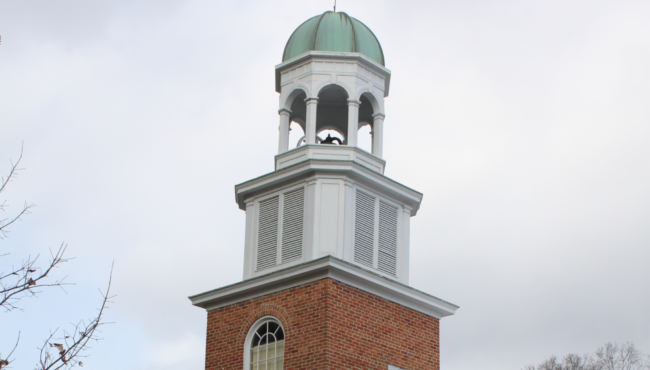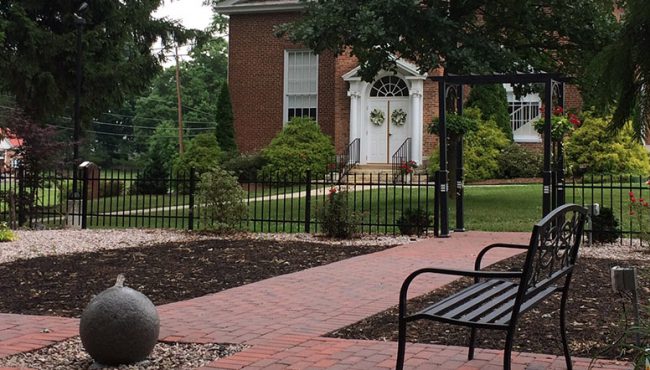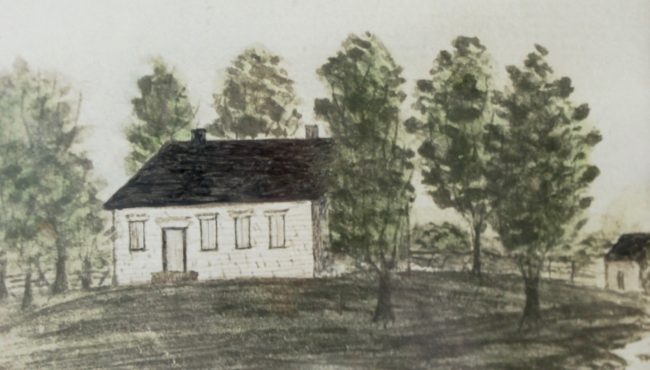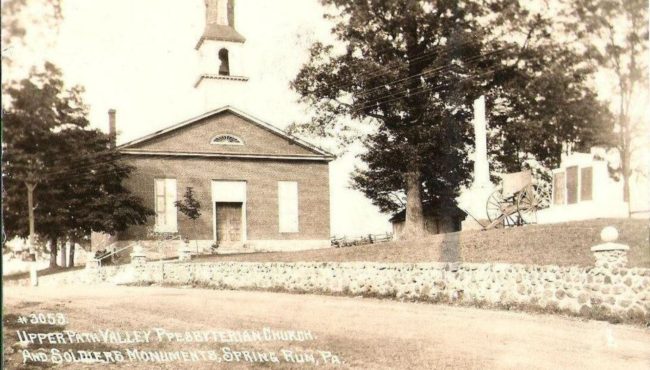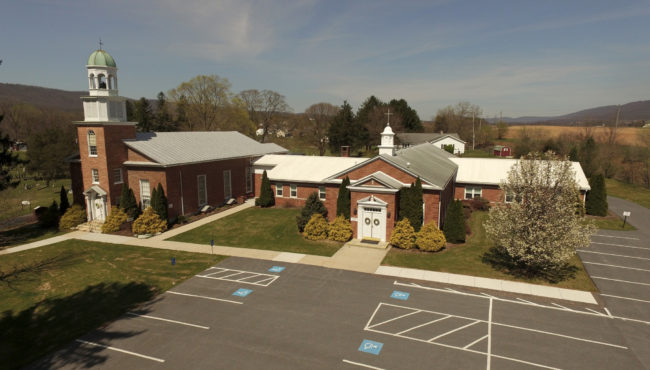History of Upper Path Valley
The Upper Path Valley Presbyterian Church has a long history of serving the Lord in Path and Amberson Valleys. The following is a brief overview of the church’s history for the past 250 years. For an in-depth history, please see the following books, both found in the church library:
- History of Path Valley Presbyterian Churches. Published by the Reverend D.I. Camp and the Reverend J. Warren Kaufman, 1916.
- The Presbyterian Churches of Path Valley – Amberson Valley 1766 – 1966.
The first settlers who entered Path Valley between 1736 and 1750 were largely of the Scotch-Irish and German (Reformed) ancestry, bringing to the Valley strong character for industry, thrift, morality, and virtue. Long before a building was erected for public worship, the faithful gathered in groves, barns, and private homes. In addition to having problems with hostile Indians, those who settled prior to 1750 faced eviction by magistrates because the lands had not been legally opened for settlement.
The Treaty of Albany, 1754, opened the way for the return of those who had been forced to leave their homes four years before. Due to misunderstandings as to the extent of lands included in the treaty, and at the encouragement of the French who were trying to increase their domain in North America, Indian raids occurred. For the duration of the French and Indian War, which lasted from 1755 to 1762, the Valley settlers suffered terribly from Indian raids that continued until 1765.
Once their cabins were constructed, their newly acquired lands under partial cultivation, and the Indians had been pushed Westward, the settlers began to provide places for the public worship of God. Several interested settlers, from both the upper and lower areas of the Valley met with the Presbytery of Donegal (now Carlisle) April 23, 1766, to ask for supplies and a minister to examine their youth and preside in electing and installing elders. Committees from Presbytery could not bring the settlers to decide on one spot to build a meeting-house and finally, to satisfy all parties, recommended that two be erected. The Upper Church did not follow the suggestion of Presbytery, which would have placed the church near Dry Run, but in 1769 completed the building on the site deeded to them by the Penns – somewhere near the spring and below the present building “at a point now enclosed in the graveyard”. The lower part of the congregation finished their building in 1774 at the site suggested by the committee. Both were located near springs of water to furnish refreshment for man and beast; both were rude log structures, having neither floor nor ceiling nor stove.
Commitment to spreading God’s Word and bringing new believers into the fellowship of the church has always been a strong focus of the Upper Path Valley Presbyterian Church. The evangelistic history of the church started with the first pastor, the Reverend Samuel Dougal, who was ordained and installed on October 9, 1775. Rev. Dougal visited new settlers as they moved into the valley, especially Germans, persuading them to attend, making a large proportion of the congregation of German origin. Following this example, revival and evangelistic services have been held throughout the years. One revival in 1831, held by the Reverend Amos McGinley, brought in 100 new members! During 1855 and 1856, the Reverend William West added 101 new members through confession of faith, with revival services during 1865 and 1866 adding 76 new members. During the Reverend Camp’s tenure as pastor (1905 – 1923), evangelistic services were held each autumn at Spring Run, Dry Run, Amberson, and Willow Hill.
Mission and outreach has also been an important priority throughout our history. The first Missionary Society, the Woman’s Home and Foreign Missionary Society, was established at UPVPC in 1857. In 1874, the Woman’s Missionary Society donated money for the erection of a seminary building in Dry Run with a room to be designated Woman’s Missionary Society and Church of Upper Path Valley, Franklin County, PA. The first floor was used as an academy and the second floor was used for religious meetings and other reasonable purposes. The State High School superseded the old Academy providing young men and women of the Valley additional education. From 1920 through World War II, New Testaments were presented to the military men of the congregation. In 1967 the Women’s Association formed three circles, Anna West (for those ladies who could meet during the day), Katherine Walker (for those ladies who preferred to meet in the evening), and Jet Set (high school girls), with a total of 74 members. Throughout the years the Missionary Society has changed names but has continued to spread God’s word through providing assistance to those within the community and abroad.
The first mention of a youth ministry was during Rev. Camp’s tenure. A Young People’s Branch of Woman’s Christian Temperance Union was formed and remained active for several years. In 1943 a new Young People’s organization was started and called the Westminster Fellowship. In March 1975, Child Evangelism classes were started, bringing elementary students to the church one day a week to learn the word of God, a program that continues to date. In June 1975, the Camp Krislund Program was adopted. The ministry to youth continues to be an important priority.
After two years of prayer and study, in 2013 the church requested and received a gracious dismissal from the PC(USA). Upon dismissal, UPVPC was welcomed into ECO: A Covenant Order of Evangelical Presbyterians – a denomination formed in 2011. Throughout the years, many extensive renovations and improvements have been made to the property. Some particular dates of importance within the church life are as follows:
- In 1816 the “Stone Church” was built, occupying the same site that the present structure occupies.
- In 1856 the present brick church building was erected on the same site as the “Stone Church”.
- The memorial windows were installed in 1907.
- On February 5, 1876, Elder James Culbertson of the Amberson district asked the privilege of building a church in that portion of the congregation, thus becoming a second site for worship. The Amberson congregation ceased meeting in 1996, and the building was released to the Cornerstone Congregation in September 2015.
- The church basement was excavated by hand and horse-drawn pulleys to be used for Sunday School and social gatherings. The new area was dedicated January 25, 1927.
- In 1936, the pipe organ was presented to the church by J. Chambers Goshorn and was installed.
- An extensive upgrade to the sanctuary was completed in 1948 including new lighting, new carpet, a new pulpit & lectern, communion table, chancel rails, and pulpit chairs.
- The education wing of the property was completed and dedicated December 7, 1958.
- The plaster ceiling was removed and a drywall ceiling installed in the sanctuary, along with a new lighting design, and new carpeting in February of 2006.
- Handicap accessible entrances were completed for both the dining room and kitchen in 2008.
- Bathrooms in the education wing were renovated in 2009, as well as new flooring installed throughout the education wing.
- The parking lot was expanded by 35 spaces in the summer of 2009.
- A projection/sound system was installed in the sanctuary in 2010.
- The 100 yr. old pipe organ was removed in 2011 and replaced with a digital organ.
- Air conditioning was installed for the sanctuary in 2011.
- A memorial prayer garden was built and dedicated in 2014.
Since 1766, the Upper Path Valley Presbyterian congregation has been served faithfully by 20 pastors to include our current pastor, the Reverend Dr. Meagan M. Boozer, who was installed as the first female pastor on October 13, 2002. Our church is growing. Planning for the future, with thanksgiving for our past, will help us continue the mission set before us of being and making disciples of Jesus Christ!

